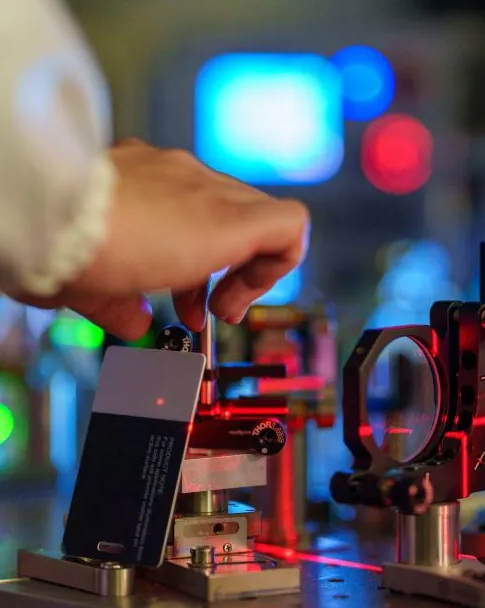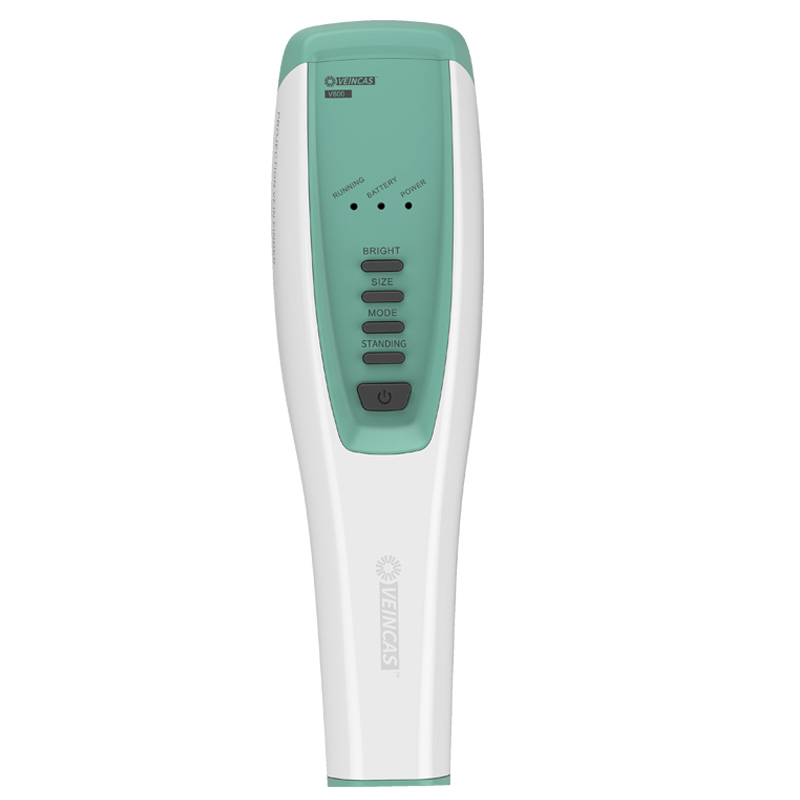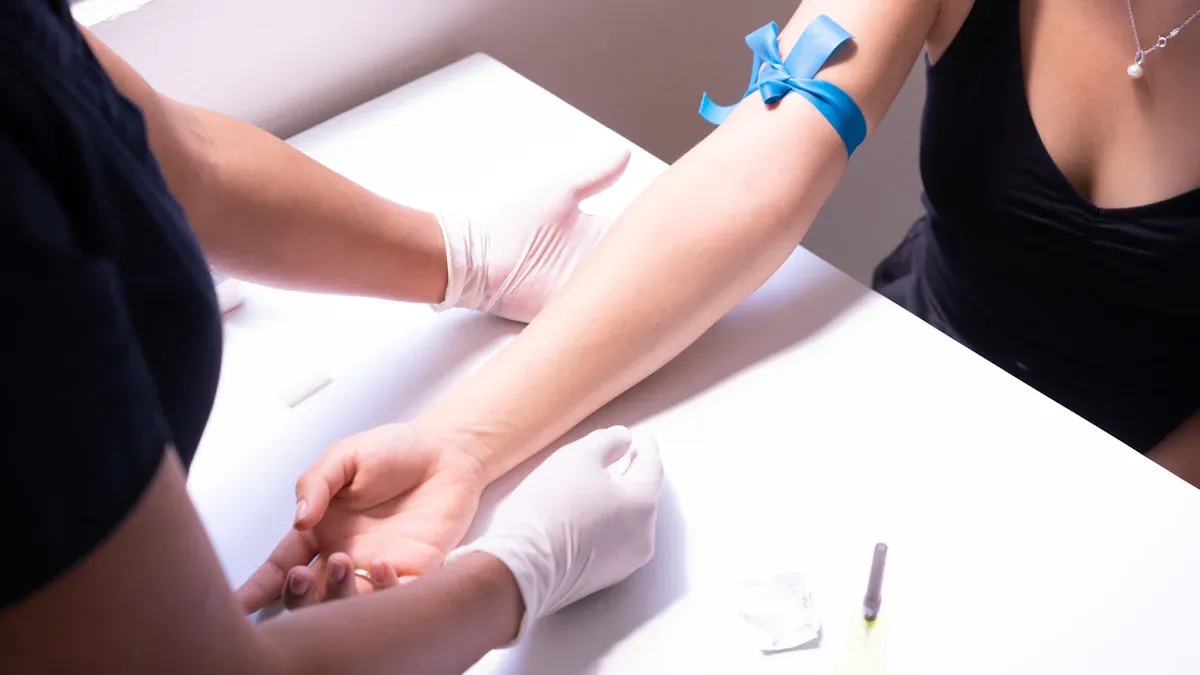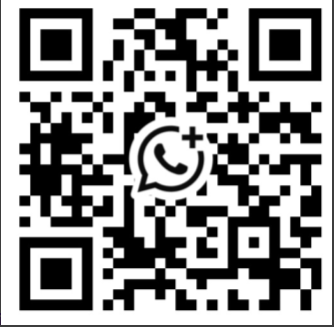A جهاز تحديد الوريد الإسقاطي يُتيح لك رؤية الأوردة تحت الجلد. يستخدم الجهاز نوعًا خاصًا من الضوء. يُسلّط الجهاز ضوءًا تحت الأحمر على ذراعك أو يدك. يمتص الهيموغلوبين في دمك هذا الضوء، مما يُظهر أوردتك بوضوح. سترى خريطة لأوردتك على جلدك. يستخدم العاملون في مجال الرعاية الصحية هذه الأجهزة للعثور على الأوردة بسهولة أكبر، مما يجعل الوصول إلى الأوردة أكثر أمانًا. في المستشفيات وسيارات الإسعاف، تُساعد هذه الأدوات الأطفال وفرق الطوارئ. غالبًا ما يُشخصون الوريد من المحاولة الأولى.
السيناريو السريري | الجهاز المستخدم | حصيلة |
|---|---|---|
مرضى الأطفال | فين فيور® | أفضل في العثور على الأوردة، ويحقق نجاحاً أكبر في المحاولة الأولى، ويحتاج إلى محاولات أقل. |
المسعفون في خدمات الطوارئ الطبية | أكيوفين | سهولة الوصول إلى الوريد، ومزيد من النجاح، ومحاولات أقل في المواقف الصعبة. |
النقاط الرئيسية
تستخدم أجهزة كشف الأوردة الإسقاطية الأشعة تحت الحمراء لإظهار الأوردة. هذا يُمكّن الأطباء من رؤية الأوردة بشكل أفضل أثناء العمل الطبي.
تساعد هذه الأجهزة الأطباء على اكتشاف الأوردة من المحاولة الأولى، مما يُقلل من ألم وقلق المرضى.
استخدام أجهزة كشف الأوردة يُقلل من وخز الإبر للمرضى، مما يُحسّن حالة الأطفال وكبار السن.
تساعد أجهزة كشف الأوردة الأطباء على العمل بشكل أسرع وأكثر أمانًا. هذا يوفر الوقت ويساعد المرضى على الحصول على الرعاية بسرعة.
أصبحت أجهزة كشف الأوردة المحمولة أكثر شيوعًا الآن. فهي تساعد العاملين في مجال الرعاية الصحية على تقديم الرعاية في أماكن عديدة.
تقنية تحديد الأوردة الإسقاطية
مبدأ الضوء تحت الأحمر
يستخدم جهاز كشف الأوردة الإسقاطي العلم للمساعدة في العثور على الأوردة بسرعة. يُسلّط الجهاز ضوءًا قريبًا من الأشعة تحت الحمراء على بشرتك. يتراوح طول هذا الضوء بين 700 و950 نانومترًا. تأتي أفضل النتائج من 850 نانومترًا. يعمل ضوء الأشعة تحت الحمراء القريب بكفاءة لأن بشرتك وأنسجتك تعكس معظمه، لكن أوردتك تمتصه.
نطاق الطول الموجي (نانومتر) | فعالية الكشف عن الأوردة |
|---|---|
700 - 950 | النطاق الأكثر فعالية |
850 | التصور الأمثل |
يستخدم جهاز فحص الأوردة مصابيح LED قوية تعمل بالأشعة تحت الحمراء القريبة كمصدر للضوء. يمر الضوء عبر الجلد ويصل إلى الأوعية الدموية تحته. تستخدم أجهزة مثل AccuVein هذه الميزة لمساعدتك على رؤية الأوردة القريبة من السطح. يمكنك رؤية أوردة يصعب رؤيتها بالعين المجردة.
امتصاص الهيموجلوبين
الهيموغلوبين هو جزء الدم المسؤول عن حمل الأكسجين. وهو مهم في تقنية تصوير الأوردة. عندما يصطدم ضوء الأشعة تحت الحمراء القريب بجلدك، يمتص الهيموغلوبين في عروقك كمية أكبر من هذا الضوء مقارنةً بالأنسجة المحيطة به. يُسمى هذا الامتصاص التفاضلي للضوء. ولهذا السبب، تبدو الأوردة أغمق من الجلد المحيط بها.
يذاكر | النتائج الرئيسية |
|---|---|
نهج مبتكر في مجال التحليل الطيفي للأشعة تحت الحمراء القريبة | تستقبل الأوردة الضوء القريب من الأشعة تحت الحمراء (740 نانومتر - 760 نانومتر) بسبب الهيموجلوبين غير المؤكسج، مما يجعلها مختلفة عن الشرايين والأنسجة الأخرى. |
التقييم الأولي لتقنية تصوير الأوردة بالأشعة تحت الحمراء القريبة | يستخدم الجهاز ضوء الأشعة تحت الحمراء بطول موجي 785 نانومتر، والذي يمتصه الهيموجلوبين في الأوعية الدموية، بينما تعكسه الأنسجة الأخرى، مما يساعد على إظهار الأوردة. |
استخدام ضوء الأشعة تحت الحمراء القريبة لتصوير الأوعية الدموية | يقوم جهاز إضاءة الأوردة بإسقاط الأوردة على الجلد، باستخدام الامتصاص العالي للأطوال الموجية الأقصر بواسطة الهيموجلوبين للحصول على رؤية واضحة. |
تساعد هذه العملية مُعاينات الأوردة على رسم خريطة واضحة لأوردتك. يستخدم الجهاز كاميرا صغيرة حساسة للأشعة تحت الحمراء لالتقاط الصورة. يُنسّق مستشعر الصورة الصورة، ويُزيل مُرشّح ما لا ترغب برؤيته. تستخدم بعض مُعاينات الأوردة جهاز عرض رقمي مُعالج للضوء لعرض صورة الوريد مباشرةً على بشرتك.
عنصر | وصف |
|---|---|
مصدر الضوء | مصباح LED عالي الطاقة للأشعة تحت الحمراء القريبة (NIR) |
جهاز التصوير | كاميرا صغيرة الحجم حساسة للأشعة تحت الحمراء |
مستشعر معالجة الصور | يلتقط الصورة وينسقها |
فلتر | يزيل الشوائب غير المرغوب فيها من الصورة |
تحسينات إضافية | جهاز عرض معالجة الضوء الرقمي (DLP) لعرض صورة الوريد على الجلد |
تصور الوريد في الوقت الحقيقي
يُعطيك مُكتشف الأوردة الإسقاطي نتائج فورية. عند تحريك ذراعك، يُغيّر مُشاهد الأوردة الصورة على الفور تقريبًا. يستغرق الجهاز حوالي 579 ميلي ثانية فقط لعرض أوردتك. تُساعدك هذه السرعة أنت ومُقدّم الرعاية الصحية في العثور على الوريد الصحيح بسرعة.
تتيح لك ميزة إسقاط الأوردة في الوقت الفعلي الحصول على صورة حية لأوردتك لتسهيل الاختيار.
يمكنك تغيير سطوع الضوء والتباين للحصول على رؤية أفضل.
يساعدك ترميز الألوان على رؤية الأوردة على درجات لون البشرة المختلفة وفي الإضاءة المختلفة.
تعتبر هذه الأجهزة سهلة الحمل والاستخدام بجانب السرير أو في الميدان.
بإمكانك حفظ الصور لاستخدامها لاحقًا من خلال تسجيل الصور وتخزينها.
تُظهر أجهزة كشف الأوردة الأوردة في حوالي 70% من الحالات باستخدام أجهزة مثل NAVI-60. تستطيع بعض أجهزة كشف الأوردة المتقدمة كشف الأوردة بنسبة 94%، وهي نسبة أفضل بكثير من الفحص اليدوي. على سبيل المثال، لا يكشف استخدام العاصبة الأوردة المرئية إلا في 46% من الحالات. أما باستخدام جهاز كشف الأوردة الإسقاطي، فتزداد فرصك في العثور على الوريد الصحيح من المحاولة الأولى.
نصيحة: يمكن أن يؤدي استخدام جهاز تحديد الأوردة الإسقاطي إلى جعل الوصول إلى الأوردة أسرع وأكثر أمانًا وأقل إجهادًا بالنسبة لك وفريق الرعاية الصحية الخاص بك.
أنواع أجهزة كشف الأوردة
هناك ثلاثة أنواع رئيسية من أجهزة كشف الأوردة: أجهزة محمولة، ونماذج ثابتة، وحلول متنقلة. لكل نوع ميزات خاصة. فهي تساعدك أنت أو ممرضتك على العثور على الأوردة بسرعة وأمان.
الأجهزة المحمولة
جهاز كشف الأوردة المحمول صغير وخفيف الوزن، يمكنك حمله بسهولة. يسهل نقله من شخص لآخر. يُفضله الممرضون والأطباء لأنه يوفر الوقت، كما يُساعدهم على تحديد الأوردة بشكل أفضل. يُعدّ جهازا AccuVein AV400 وAV300 من الأجهزة المعروفة، وهما مناسبان جدًا للأشخاص ذوي البشرة الداكنة أو الأوردة الصغيرة، مثل الأطفال. يمكنك استخدامهما دون الحاجة لحملهما.
تساعدك أجهزة كشف الأوردة المحمولة على العثور على الأوردة بسرعة، مما يوفر عليك عناء البحث.
يساعدون الممرضات على سحب الوريد من المحاولة الأولى، مما يعني تقليل عدد مرات وخز الإبرة.
تدوم معظم الأجهزة المحمولة خمس ساعات على الأقل قبل الشحن. يمكنك استخدامها لعدة أشخاص على التوالي.
تجعل هذه الأجهزة الأمور أسهل من خلال تقليل الألم والقلق.
نصيحة: أكثر من نصف أجهزة كشف الأوردة محمولة باليد. وهذا يدل على ثقة العديد من العاملين في مجال الرعاية الصحية بها.
نوع الجهاز | وزن | قابلية النقل | الوظيفة | خيارات الاستخدام الحر |
|---|---|---|---|---|
محمول باليد | 10 أونصة | نعم | يكتشف الأوردة باستخدام الضوء | نعم |
نماذج ثابتة
جهاز كشف الأوردة الثابت يبقى ثابتًا في مكانه. غالبًا ما يكون مثبتًا على حامل بعجلات. تجده في المستشفيات أو العيادات المزدحمة. وهو مناسب للعلاجات الطويلة أو عند الحاجة إلى استخدام كلتا اليدين. يمكنك تغيير الارتفاع والزاوية لرؤية الأوردة بشكل أفضل.
تتيح لك الموديلات الثابتة العمل دون الحاجة إلى حمل الجهاز. وهذا مفيد أثناء العمليات الصعبة.
هذه الأجهزة ليست سهلة النقل، بل تُستخدم في غرفة واحدة فقط.
إنها تعطي صورًا واضحة للأطباء والممرضات أثناء الجراحة أو الحقن الوريدي.
نوع الجهاز | وزن | قابلية النقل | الوظيفة | خيارات الاستخدام الحر |
|---|---|---|---|---|
ثابت | غير متوفر | No | تستخدم مع المنصات ذات العجلات | نعم |
الحلول المحمولة
تجمع أجهزة كشف الأوردة المحمولة بين أفضل ما في الأجهزة اليدوية والثابتة. يمكنك اصطحابها معك في أي مكان، حتى إلى منزل شخص ما أو عيادة بعيدة. وزنها أقل من 10 أونصات، وتناسب حقيبتك. تُظهر لك الأوردة فورًا، ما يُمكّنك من العثور عليها بسرعة.
تساعد أجهزة تحديد الأوردة المحمولة الممرضات في العمل في المنزل بشكل أسرع وأفضل.
يمكنك استخدامها في حالات الطوارئ أو في الأماكن التي لا تتوفر فيها أدوات كثيرة.
تعمل هذه الأجهزة على تقليل الألم أو العدوى أو الكدمات الناتجة عن الأوردة المفقودة.
إنهم يستخدمون التصوير الذكي لإرشادك وجعل عملك أكثر أمانًا.
ميزة | وصف |
|---|---|
سهولة الاستخدام | سهل الاستخدام ويحتاج إلى القليل من التدريب. |
التصور في الوقت الحقيقي | يظهر الأوردة على الفور للعثور عليها بسرعة. |
محمول | خفيفة وسهلة الحمل للزيارات المنزلية أو في حالات الطوارئ. |
راحة المريض | يجعل المرضى يشعرون بتحسن وخوف أقل، وخاصة الأطفال. |
دقة | يساعد الممرضات على الحصول على الوريد الصحيح من خلال صور واضحة. |
ملحوظة: أصبحت أجهزة كشف الأوردة المحمولة الأكثر شيوعًا. وبحلول عام ٢٠٢٥، ستشكل أكثر من نصف السوق. وسترى المزيد من هذه الأجهزة تستخدم الذكاء الاصطناعي للمساعدة في الأماكن البعيدة.
 English
English Français
Français Español
Español Deutsch
Deutsch Italiano
Italiano العربية
العربية








 IPv6 الشبكة المدعومة
IPv6 الشبكة المدعومة
